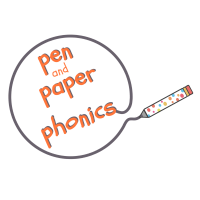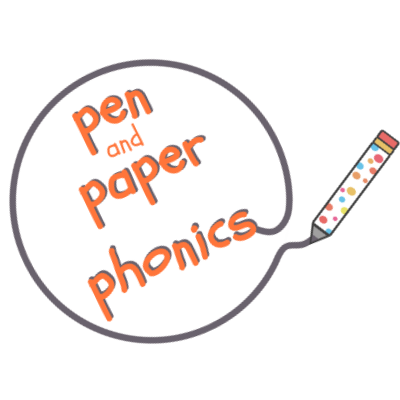
CVC words form an important stage in the reading process.
The reason a treasure map activity like this works when practicing CVC words, is that children love board games. So they are already going to be excited to play, and read.
It also means you can tailor the learning to where your child or student is at, because you can decide on the words they will be reading.
And if you are worried about your artistic skills, don’t be! I’ve found it doesn’t really matter if your drawings are less than perfect – children generally appreciate any attempt at a game, and, as long as they are practicing their phonics, all is well!
CVC Words Background Information
After a child has learned the letter sounds of the alphabet – and often while they are learning – they begin to hear that sounds ‘pushed’ together can make words. For example, /c/ and /a/ and /t/ together make the word ‘cat’. When they start sounding out these words, they are beginning to read.
Related content: Blending and Segmenting
‘Cat’ is an example of a CVC word: These are words that have a consonant-vowel-consonant (CVC) spelling pattern.
Because of this simple structure, they are a great place to start when helping children learn to read. And this treasure map activity is a fun way to practice this.
The Basic Idea behind this activity
The basic idea is to draw a map so that you can get to a CVC word as creatively as possible – and read it!
I’ve done this activity lots of times with a simple road map, but there are endless possibilities for what to draw (see the ‘How to Adapt’ section below), and treasure maps are always a hit.
*Before you start to read, if you would like help to know if this CVC Words Treasure Map activity is right for your child or student, click here for information to help you decide.
CVC Words Treasure Map
What you will need:

- a list of the CVC words you want to practice,
- a big piece of paper, or a paper roll, rolled out on a table,
- small flaps of paper to use as treasure chests,
- yellow card cut up into circles to use as coins,
- glue,
- markers and coloring pens,
- counters,
- a dice.
*In the resources section of this post, there is a free CVC word list, and some printable treasure chests and golden coins. Also, this Measured Mom post has a great pack of CVC word lists.
How to play the game:



You can make the treasure map beforehand, or, you can involve your child or student in making it.
To set it up:
- Write the CVC words at different points on the paper.
- Cover them with a ‘treasure chest’. To keep the flaps down, you can use a bit of sticky tack, then once the chest has been opened, it can be closed again.
- Then draw a map with different routes to each word. Add in hazards and features such as sharks, palm trees, snakes, oasis, swamps, bridges. Anything you can think of!
- Put two coins on each chest.
To play:
- Go through the words that you want to practice, on the list or on flashcards
- Then take turns to roll the dice and move around the board.
- When you reach a treasure chest, look under it and read the word.
- If you read it correctly, collect a coin.
- Check off each word as they are read, as an extra practice in reading the word.
To note
Not every game or activity goes to plan! Here are some things to watch out for:
- When playing any educational game, there is always a balance to make sure that the activity doesn’t take over the purpose. This game is definitely one to watch for this. Sometimes, children who are reluctant to read, are very enthusiastic about creating maps but less so about reading the words. The activity then becomes a drawing one.
- To manage this:
- have clear expectations that the activity is a reading one,
- limit the amount of time spent drawing. For example, 5 minutes drawing and then play the game. Or, prepare the map first so that the focus is on moving around the board and reading.
- To manage this:
How to adapt

The best way of adapting this CVC Words Treasure Map activity is to take it outside. Use chalk to write the CVC words on the ground, and then draw stepping stones and other hazards such as sharks or swamps. Use the dice to generate the number of steps needed each turn.
Use a different map style: It could be a road map with the words under manhole covers, or it could a space walk with the words under planets.
Different words: If you put the words on small pieces of paper, rather than write them directly on the map, you can put them under the treasure chests, and then change the words the next time you play.
Play it in some sand: Then it would be actual buried treasure! You could use real pebbles as the stepping stones and then put an ‘x’ over the spot of the buried treasure/word. Use a dice as usual to move along the pebbles.
Here’s how it looked when I did it in ‘real life’!

Resources
CVC Word List and Resources for Treasure Map Activity
The following posts are also about blending and segmenting words to read:
Is this CVC Words game right for my child?
Sometimes, it can be difficult to know if an activity will be helpful for your child or student. For this activity, the questions below might help:
- Is your child learning letter sounds? Are they confident on the ones they have learned?
- Can they hear what a word should be if you break it up? For example, if you said ‘c-oa-t’ would they know you were saying ‘coat’?
- If you give them a word like ‘bat’ can they tell you some or all of the sounds that make up this word?
- Have they begun to read two and three letter words correctly by sounding out? For example, ‘sit’ and ‘rat’?
If the answer is ‘yes’ to these questions, then this CVC Words Treasure Maps will be a great way to teach or reinforce CVC word recognition.





